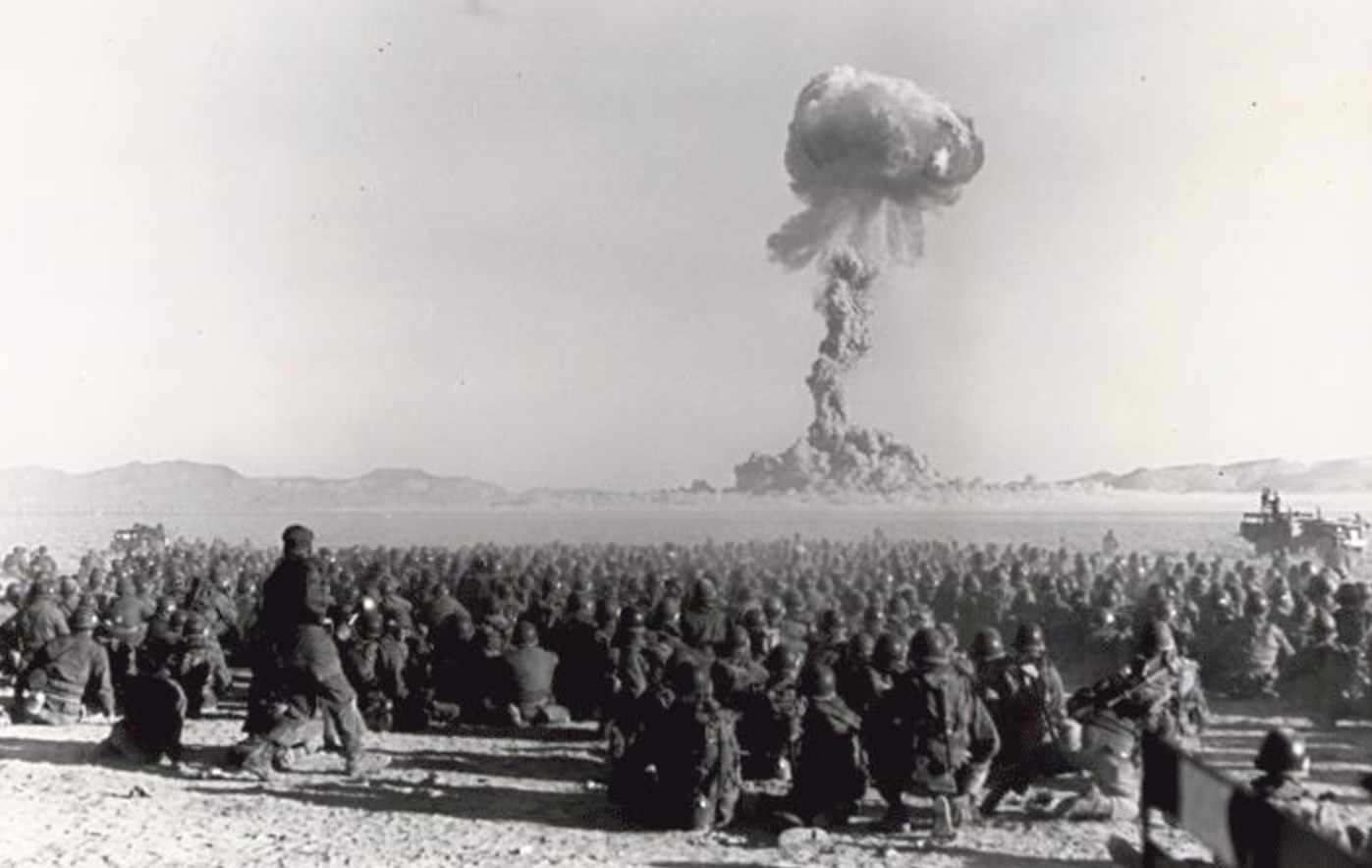How to Avoid Nuclear War
Share

In October 1945, the Tribune published “You and the Atomic Bomb,” an article by George Orwell that asked a fundamental question: “How hard are these things to manufacture?”
Technically savvy journalists knew about the bomb months before the public, and some understood its political significance. A major theory of history is that politics and culture follow weapons technology. During the era of cheap gunpowder and rifles, for example, when rebel groups could overthrow governments and small countries could resist larger ones, democracy and nationalism flourished. The development of the atomic bomb, Orwell predicted, would have the counterintuitive effect of preventing major wars. Since the atomic bomb “is a rare and costly object as difficult to produce as a battleship,” its being possessed by a handful of great powers is “likelier to put an end to large-scale wars at the cost of prolonging indefinitely a ‘peace that is no peace’.”
Orwell’s basic prediction—that the atomic bomb would prevent major war—was correct. In time, however, building an atomic bomb became no longer a “rare and costly” feat. With sufficient nuclear materials, building a bomb became a trivial task for explosives experts.The proliferation of nuclear weapons, then, disrupted the emerging hegemony of the United States and the Soviet Union. Instead of two lone superstates, a complex network of nations emerged, with each serving as satellite states for either the “West,” led by the United States, or the “non-West,” led by the Soviet Union and, later, post-Soviet Russia. Instead of threatening the lesser powers in their opponents’ networks with nuclear weapons, war planners in the United States and Russia stoked proxy conflicts with the countries in their network. They battled each other to increase the relative size of their webs, but otherwise steered clear of each other. That “implicit agreement” has thus far held up, even after Russia invaded Ukraine. Why?
Consider the science of game theory, formally developed by John von Neumann and Oskar Morgenstern in 1944 but informally known since Babylon. Morgenstern and von Neumann’s book on game theory was based on von Neumann’s “minimax” theorem, which held that in a zero-sum game with two players and perfect information, each player has an available strategy that allows him to minimize his maximum loss—to minimize the loss he would incur in the worst-case scenario.
Their book extended the original theorem past its simplifying assumptions, which was important given the developing nature of war. Before the era of total war, war was closer to a perfect-information game, like chess. Two armies would meet in a backcountry and fight according to pre-arranged rules, whether formal or informal. In the era of total war, which began with the American Civil War, both sides in conflict operated with imperfect information. By the nuclear age, imperfect information was the rule. Today, with cyber warfare, advanced weapons and missile defense systems, and various alternative strategic weapons of mass destruction, it is nearly impossible to know the strategic assets and parameters of your opponent. Even so, minimizing maximum losses remains, from a game-theoretic perspective, the correct objective.
How do countries, operating with imperfect information, minimize their maximum loss—in other words, what is the optimal strategy for avoiding nuclear war? The critical factor, in an age of imperfect information, is keeping each superpower’s red lines as far from each other as possible. There are two popular strategies to achieve this goal—there is the well-worn strategy of the hawk, who says that “appeasement” never works, and insists that his nation ought to keep pushing, as the other side will always back down. The dove’s argument is simply to “stay out of war.”
Neither gets it right. The optimal strategy is to be a hawk in your own neighborhood and a dove in your adversaries’. This is called the “Bourgeoisie strategy” by biologists, and for it to be successful, its adherents need to integrate this strategy with knowledge of how actual human beings make decisions—using their complex and highly flawed systems of cognition in an array of environments. In other words, they need to be more like a poker player than an academic statistician. The Cold War-era national security establishments, on both sides of the conflict, had that poker-player ability to understand both probability theory and human cognition. Both sides in the Cold War relied on the Bourgeoisie strategy, as seen during the Cuban Missile Crisis.
Subscribe Today
Get weekly emails in your inbox
From the perspective of international peace, Bourgeoisie vs. Hawk or Bourgeoisie vs. Dove are preferable to Hawk vs. Hawk; only one of those three ends in nuclear holocaust. However desirable in the abstract, Dove vs. Dove is a fantasy in a world with self-interested nations. Nuclear armageddon was not avoided in the Cold War by indulging in fantasies of man’s moral development.
Whatever knowledge of this strategic paradigm both sides had in the Cold War has now been lost. Today, the situation is orders of magnitude more dangerous than the Cuban Missile Crisis, because now the nuclear red lines overlap. In Ukraine, it’s Hawk-Hawk. Although not a traditional border, Western elites hold Ukraine to be an integral part of their international political community. They feel a much stronger sense of affinity towards the international community and its borders than they do the official borders of their own nominal nations. Moreover, the size of the international community has never decreased. It has never suffered the kind of setback that a loss in Ukraine would represent and they are all too aware that such a setback can cascade.
Meanwhile, like New York used to be the capital of America, Kiev used to be the capital of Russia. Russia needs to have it at least somewhat in its sphere of influence. A fully western Kiev shows to ambitious Russians that the type of Russia that Putin and his supporters envision is headed for the ash heap of history, and it’s time to get on board with “the West.” Such an impression is a terminal diagnosis for a regime. Neither side—Russia nor “the West”—will back down. Can nuclear war be avoided in these conditions? There are obvious ways to end the war itself, but doing so while leaving each side’s red lines on top of each other makes the nuclear war only a matter of time. Russia, like the Kaiser, sees itself getting weaker and thinks now is the best time to fight. A realistic diplomatic solution must create space between the red lines of Russia and the West. The Cuban Missile Crisis example provides hope, but only if our leaders understand the nature of the game they’re playing.













